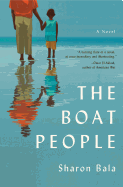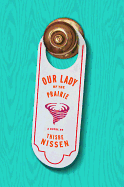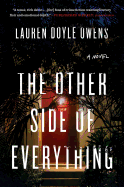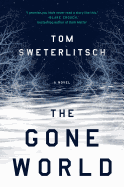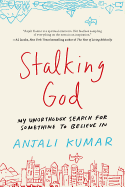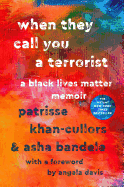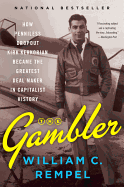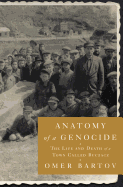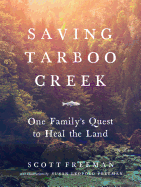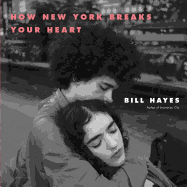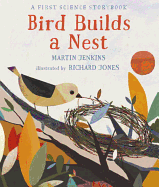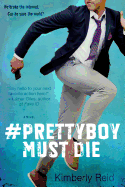_Michael_Ray.jpg) |
| photo: Michael Ray |
Tom Sweterlitsch's second science fiction novel is The Gone World (Putnam, $27, reviewed below). Like his debut, Tomorrow and Tomorrow, this novel throws into question the very foundation of reality. Shannon Moss is an agent working for a top-secret government agency that has discovered how to send humans through time and into deep space. When Moss is sent to the future to find clues to a difficult murder case taking place in her present, she uncovers details that link not only to the murder--but to the very end of humanity as we know it. It's a thrilling novel that blends the mind-bending storytelling of science fiction with the pace of a thriller.
Your protagonist, Shannon Moss, lives in a world where humans have discovered how to travel through time and space. But unlike other novels that take up similar concepts, Shannon can't travel to the past--only the future, or "futures" (since every future is only one possibility of many). What kinds of scientific theories underlie your take on time travel?
There's a fun paper from the September 1988 Physical Review of Letters you can find online called "Wormholes, Time Machines, and the Weak Energy Condition" by Michael S. Morris, Kip S. Thorne and Ulvi Yurtsever. It's about how super-advanced civilizations might be able to time travel. I read a lot of speculative science like this to keep my time traveling at least in the general realm of plausibility.
But the image of time travel came before trying to figure it out. That idea of traveling to futures that cease to exist once the traveler returns home to the present had been in my mind for a number of years, and when I started researching for The Gone World I had to ask myself: What does "cease to exist" even mean? There were two theories in quantum mechanics that captured my imagination because both seem to be about how 'nothingness' might not be nothingness at all. One was the "Casimir Effect" of Hendrik Casimir, the other was John Wheeler's idea of "Quantum Foam." Quantum Foam is a driving image in The Gone World--the idea that at the absolute smallest of levels, the "void of space," or "smooth spacetime" is actually a seething, turbulent foam of particles or wormholes.
What's surprised you the most about what humans have already learned and accomplished in terms of time and space travel?
I'm constantly in awe of what's discovered. And I'm inspired by my father-in-law, Dr. Howard Brandt, who was a brilliant theoretical physicist in the fields of quantum cryptology and quantum computing for the Department of Defense, but also--and this is somewhat unusual in the sciences--he was a man of great religious faith. He was demanding and rigorous in his science, but his faith gave him humility that what we know about the universe is only a fraction of the truth.
Shannon is physically and mentally strong (despite a disabling injury). Where did she come from?
Shannon Moss is the best thing about this book. One of my favorite parts of writing is discovering characters while I'm writing--how they suddenly "appear" in your mind from out of nowhere and then the more you write about them the more you discover. But there are definitely influences. I'm writing about my own childhood friends, for sure, and also some of my wife's memories. And during an early draft I was watching The Ultimate Fighter 23, with Rose Namajunas--her serious-minded, determined way of speaking really helped focus how I thought of Shannon.
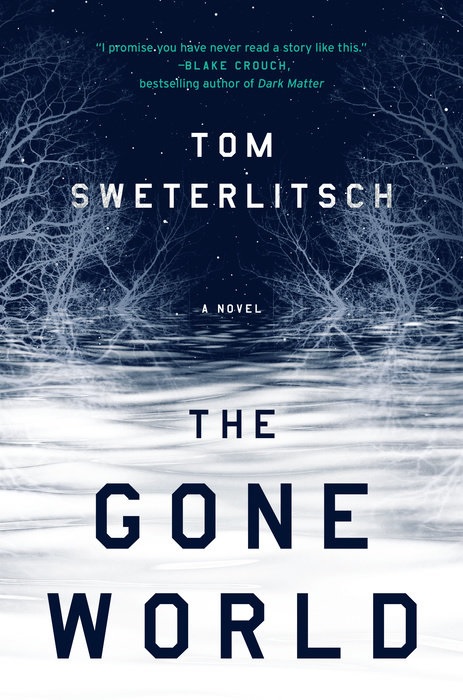 While I wouldn't exactly categorize The Gone World as an apocalyptic novel, it brushes up against the genre. Why do you think apocalyptic and dystopic stories are so popular right now?
While I wouldn't exactly categorize The Gone World as an apocalyptic novel, it brushes up against the genre. Why do you think apocalyptic and dystopic stories are so popular right now?
We're undoubtedly living in a dystopian and apocalyptic time. For many years, racial minorities and the poor have already been living in dystopian America, and now, with every news cycle, it's easier to imagine apocalyptic nuclear devastation. Both subgenres address a fear that the pleasures of life and the institutions that protect our safety and happiness are false or fragile and can easily disappear.
One of the more unsettling ideas in your book is that humans from future timelines don't actually exist. Yet, they feel and think like real humans. What was it like to spend time with characters who would eventually discover such a thing about themselves?
The first voice Shannon hears when she time travels to the future is an air traffic controller, a young woman. For Shannon, hearing that voice is like hearing the voice of a ghost, because the controller might not ever exist as a "real person," but only as a possibility. And as the book progresses, every character is forced to question their own existence. Does everything exist? Does nothing exist? The Gone World is all about existence and nonexistence, each character forming and holding onto beliefs about the nature of reality that aren't necessarily true. I think the "nature of the universe" in the book is much more compassionate than the characters think it is.
Your book has already been compared to Inception and True Detective. Did they influence your writing? Who or what else influenced your book?
I certainly like Inception and True Detective, Season One, and the comparisons would give a reader an idea of The Gone World, but my actual influences are different. The Divine Comedy, The Glass Menagerie, Strindberg and Albee--those are the major influences. But I was also strongly influenced by Anna Kavan's brilliant novel Ice, Ballard's The Crystal World and the strange fiction of William Hope Hodgson, such as The House on the Borderland and The Night Land.
What’s next for you?
Thanks for asking! I'm hoping to finish a draft of my next novel this year, and I'd also like to write more short stories--I have this huge file of ideas that I've stockpiled and I'd love to finish up some of those. --Amy Brady, freelance writer and editor
Tom Sweterlitsch: Many Possible Futures
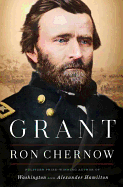 What better way to spend a three-day weekend than with a book (or three or four or more)? In keeping with the theme of Presidents' Day, chunksters like Ron Chernow's Grant (clocking in at 1,100 pages) might be a bit much to tackle in a short time, but not all presidential histories are so daunting.
What better way to spend a three-day weekend than with a book (or three or four or more)? In keeping with the theme of Presidents' Day, chunksters like Ron Chernow's Grant (clocking in at 1,100 pages) might be a bit much to tackle in a short time, but not all presidential histories are so daunting. 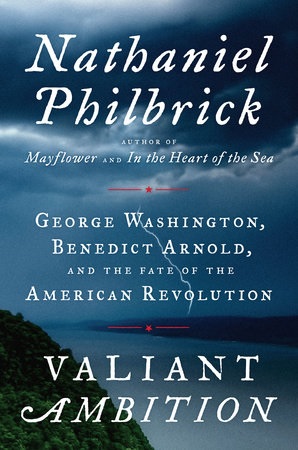 Starting with the first president of the United States (because who doesn't like a good chronological order to things?), consider Valiant Ambition (Penguin, paperback). In this engaging history, Nathaniel Philbrick (In the Heart of the Sea) explores the relationship between George Washington, the United States' most revered president, and its most reviled traitor, Benedict Arnold. Philbrick approaches both subjects--whose stories have been retold often enough to become near-mythological--with a nuanced, respectful consideration that highlights the complexities of both their personalities and the roles they played in the American Revolution.
Starting with the first president of the United States (because who doesn't like a good chronological order to things?), consider Valiant Ambition (Penguin, paperback). In this engaging history, Nathaniel Philbrick (In the Heart of the Sea) explores the relationship between George Washington, the United States' most revered president, and its most reviled traitor, Benedict Arnold. Philbrick approaches both subjects--whose stories have been retold often enough to become near-mythological--with a nuanced, respectful consideration that highlights the complexities of both their personalities and the roles they played in the American Revolution.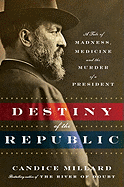 Candice Millard's Destiny of the Republic (Anchor, paperback) is equally engaging, though Millard focuses on an entirely different period in U.S. history. The history opens with James Garfield's unfortunate run-in with Charles Giteau, a disgraced lawyer who believed he had been told by God to murder the 20th president. Millard uses this pivotal moment to explore trends in science and medicine in the 1880s, as well as political traditions surrounding Garfield's unexpected win.
Candice Millard's Destiny of the Republic (Anchor, paperback) is equally engaging, though Millard focuses on an entirely different period in U.S. history. The history opens with James Garfield's unfortunate run-in with Charles Giteau, a disgraced lawyer who believed he had been told by God to murder the 20th president. Millard uses this pivotal moment to explore trends in science and medicine in the 1880s, as well as political traditions surrounding Garfield's unexpected win. 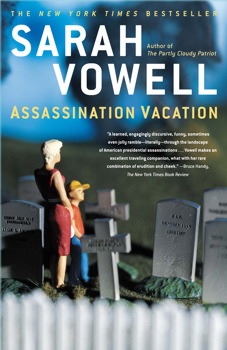 Garfield's, of course, was not the first--or last--presidential assassination, as Sarah Vowell explores in her part-memoir, part-history, Assassination Vacation (Simon & Schuster, paperback). Here, she documents her delightfully strange habit of planning vacations to visit the sites of presidential assassinations and other moments of political violence, which she then uses as a lens to explore the role of political violence in shaping U.S. history. Vowell approaches all of this with her characteristic dark sense of humor, which adds moments of lightness to an otherwise bleak subject. --Kerry McHugh, blogger at Entomology of a Bookworm
Garfield's, of course, was not the first--or last--presidential assassination, as Sarah Vowell explores in her part-memoir, part-history, Assassination Vacation (Simon & Schuster, paperback). Here, she documents her delightfully strange habit of planning vacations to visit the sites of presidential assassinations and other moments of political violence, which she then uses as a lens to explore the role of political violence in shaping U.S. history. Vowell approaches all of this with her characteristic dark sense of humor, which adds moments of lightness to an otherwise bleak subject. --Kerry McHugh, blogger at Entomology of a Bookworm

BINC.1024.B1.HELPABOOKSELLER.jpg)
_Michael_Ray.jpg)
 While I wouldn't exactly categorize The Gone World as an apocalyptic novel, it brushes up against the genre. Why do you think apocalyptic and dystopic stories are so popular right now?
While I wouldn't exactly categorize The Gone World as an apocalyptic novel, it brushes up against the genre. Why do you think apocalyptic and dystopic stories are so popular right now?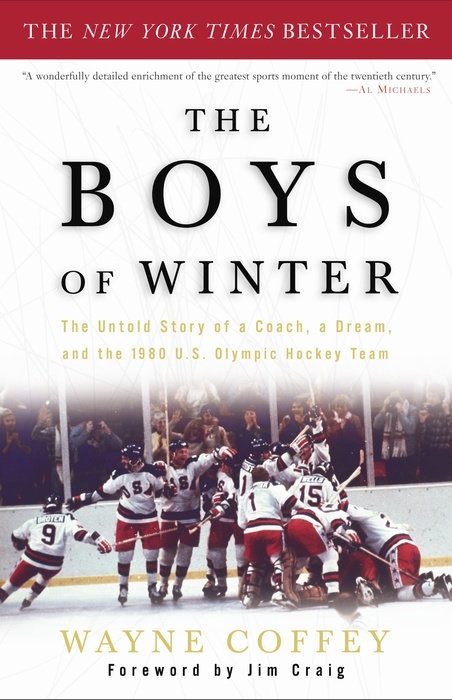 The U.S. Olympic hockey team is going for gold in Pyeongchang. Thirty-eight years ago, a very different type of team, mostly blue-collar amateurs, took on the juggernaut Soviet squad in Lake Placid, N.Y. They faced off in the first game of the medal round, both undefeated, with the U.S. team having already upset second-place favorite Czechoslovakia in the group stage. The first period ended in a 2-2 tie. The Soviets went ahead by one in the second. The Americans tied 3-3 in the third, then with 10 minutes left to play, team captain Mike Eruzione put the U.S. ahead 4-3. With 10 seconds left and an exuberant crowd counting down to the end of the game--and a U.S. victory--ABC announcer Al Michaels delivered one of the most famous lines in sportscasting: "Do you believe in miracles? Yes!"
The U.S. Olympic hockey team is going for gold in Pyeongchang. Thirty-eight years ago, a very different type of team, mostly blue-collar amateurs, took on the juggernaut Soviet squad in Lake Placid, N.Y. They faced off in the first game of the medal round, both undefeated, with the U.S. team having already upset second-place favorite Czechoslovakia in the group stage. The first period ended in a 2-2 tie. The Soviets went ahead by one in the second. The Americans tied 3-3 in the third, then with 10 minutes left to play, team captain Mike Eruzione put the U.S. ahead 4-3. With 10 seconds left and an exuberant crowd counting down to the end of the game--and a U.S. victory--ABC announcer Al Michaels delivered one of the most famous lines in sportscasting: "Do you believe in miracles? Yes!"